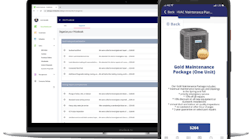As distributors, we preach profitability day in and day out, yet so few do the hard work of discovering which of our customers are either most or least profitable. Too often, employees and other managers are left with only the bottom line to measure our profitability. Make no mistake about it, your bottom line is the ultimate indicator of how all of your customers are performing, but it tells us nothing about any single customer that we serve.
Said another way, we know from our financials how our entire customer base is faring, but within that total base surely there are some that contribute more to our bottom line and others that contribute less. In addition, there are always some who take away from your bottom line by costing you more in activity costs than they contribute in gross profit dollars.
None of this thinking is new or innovative. Anyone who has been to business school or has managed in distribution knows these facts all too well. Our problem as an industry has been our failure to do much, if anything, about it. Sometimes, our failure to address this difficult area has been for want of the right software tools to address profitability, and at other times, we have found the task too daunting.
Identifying and separating your most profitable customers from your least profitable ones has never been easy, but we have reached the point in our industry's technological progression where there may no longer be the “insufficient software tools” defense for us to use. If your enterprise software does not have a tool for addressing activity-based costing, consider using something as simple as a spreadsheet program. At the end of the day, whether you have sophisticated enterprise software or use a spreadsheet method, your eyes will be opened to a whole new vista of managing your account base.
Just what is activity-based costing? For years, many of us listened to various industry experts talk of activity-based costing and bought into the program, at least philosophically. Our problem was always twofold: one was gathering the data, and the other was using the data. If we were fortunate enough to have found a way to gather the data, rare was the distributor who actually found a way to use it. Over the years, I have had numerous friends around the country make attempts to do activity-based costing, but most failed for the two reasons I stated. Either they could not gather the data or they could not use what they had gathered. I believe we are now beyond that point technologically.
Activity-based costing is the ability to assign costs to the activities that we do for customers and then make those costs follow a customer. A simple model would look like this:
In this example, we dropped roughly 16 points of gross margin percentage from the before-activities calculation to the after-activities adjusted number. Looks simple enough, right? My answer is, maybe.
It has been my experience working on activity-based costing (ABC) with one firm for five years, and with several others for lesser periods of time, that the ease of doing ABC depends upon your enterprise system. If it has an ABC module or some other integrated tool, then the process is simpler but never without work. If you must resort to a simpler spreadsheet method, the hard work of gathering and making decisions remains.
Let's shift our focus to the objectives and desired results from the work that you pour into doing ABC in your business.
Objective One: Begin to Lose Less on the Customers You Have.
More than once in the late 1980s and early '90s, I sat through presentations advocating finding your unprofitable customers and either firing them or shooting them, depending on the geographical home of the presenter. My workplace experience with ABC tells me that dropping unprofitable customers as a knee-jerk reaction is a poor business decision. Here is my thought progression for this claim.
- Let's say that I am doing $30 million in sales at a whopping 22 percent gross profit margin.
- This equation will yield $6.6 million in gross profit dollars, and let's assume I am really good and end up with a 3 percent net profit number or $900,000 in real dollars.
- Now let's say that within our $30 million in sales, we have $2 million in sales to ABC unprofitable customers, and these same customers were also 22 percent gross margin customers.
- This means that these $2 million in sales to my unprofitable customers yield my company $440,000 in gross profit dollars.
- Therefore, if I should decide to fire my customers who are giving me $440,000 in gross profit dollars then I had better be willing to drop $440,000 in expenses on the same day.
- If I do not drop $440,000 in expenses when I fire my unprofitable customers, I have effectively sliced my net profit in half because my expenses have remained the same.
This is why I say that the ABC mantra has to be “Lose less!” The case above proves that firing unprofitable customers as a first option can be a disaster.
Objective Two: Convert Unprofitable Customers to Profitable Customers.
You have already made significant investments in the customers you are doing business with, so try to salvage them. If you have an ABC system that works, you will be able to identify the customers who are unprofitable for you AND you will also know WHY they are unprofitable.
My work in ABC systems tells me that more than 90 percent of the unprofitables are unprofitable for one of three reasons.
- They give us too many small orders.
- We sell them at margins that are too low.
- We spend far too much outside sales time on them.
Let's take them in order. When it comes to measuring profitability, average order size is the king of statistics; nothing else even comes close! It is basic math. It costs a distributor roughly the same amount to book, pick, pack, ship, invoice and collect for a $50 order as it does for a $250 order. However, the $50 order at 22 percent GP gives me just $11 in gross profit dollars to do all of that work, while the $250 order at 22 percent GP gives me $55 to do roughly the same amount of work.
The next most likely culprit in the unprofitable equation is gross margin percentage. Sometimes we give away margin when we don't have to (hardly a surprise, right?). We need to be better able to set gross margin based upon a product's velocity and upon order size. The reasons why we sell at margins that are too low is a whole discussion unto itself, but just do the math on the example I used above and you will see a dramatic shift in profitability. What if that $50 order and all of the work that goes with it had not a 22 percent gross margin but a 15 percent gross margin? Enough said.
Third on the list of profitability drivers is the time we spend face to face with the customer in outside sales calls. There is no other activity that you do that is as expensive as an outside sales call. A good ABC system will provide a way to track outside sales calls and have those costs follow the customer. My work with outside sales costs indicates the cost of an outside sales call is no less than $85 per call and sometimes as great as $260.
Objective Three: Make Your Already Profitable Customers More Profitable.
If you ever successfully identify and convert your unprofitable customers to profitable ones, then you are ready to begin the pleasant task of making your already profitable customers even more profitable. The methodology is the same for your profitables as it is for your unprofitables — lose less. Armed with ABC data, you have a chance to identify and manage things like sales call frequency, average order size and gross margin percentage.
- What if you could retain a customer's business by calling in person 45 times annually instead of 52 times?
- What if I then spent those other seven calls trying to open new accounts? (I win on two fronts.)
- What if I offered price breaks by order size? (Every penny in extra gross margin dollars I can get falls right to my bottom line.)
Conclusion: ABC need not be an antiquated 20th-century buzzword. It can be a reality for any distributor who is willing to gather the data and use it to make decisions. If your enterprise software has a built-in tool, turn it on and use it. If it doesn't, there will always be a way to grab enough data from your system to calculate average order size in a spreadsheet. This number will always be meaningful. Here is my research with a couple of distributors.
- If a customer's average order size is $300 or greater, that customer has a 93 percent chance of being profitable.
- If a customer's average order size drops below $50, the inverse is true. That customer has a 93 percent chance of being unprofitable.
The onus is on us — gather the data and use it, or continue to evade the issue and settle for fewer dollars on our bottom lines. In the 1970s, there was a TV show called The Six Million Dollar Man and the opening scenes always had someone saying something like “he's been hurt, but we have the technology to rebuild him even better.” Well, we too “have the technology,” and it's time to put it to work.
Jim Hoffman (Hoffman Training) serves as a management adviser and trainer to a variety of hard goods distributors on the East Coast. Contact Jim at 717/645-1843 or by e-mail at [email protected].





